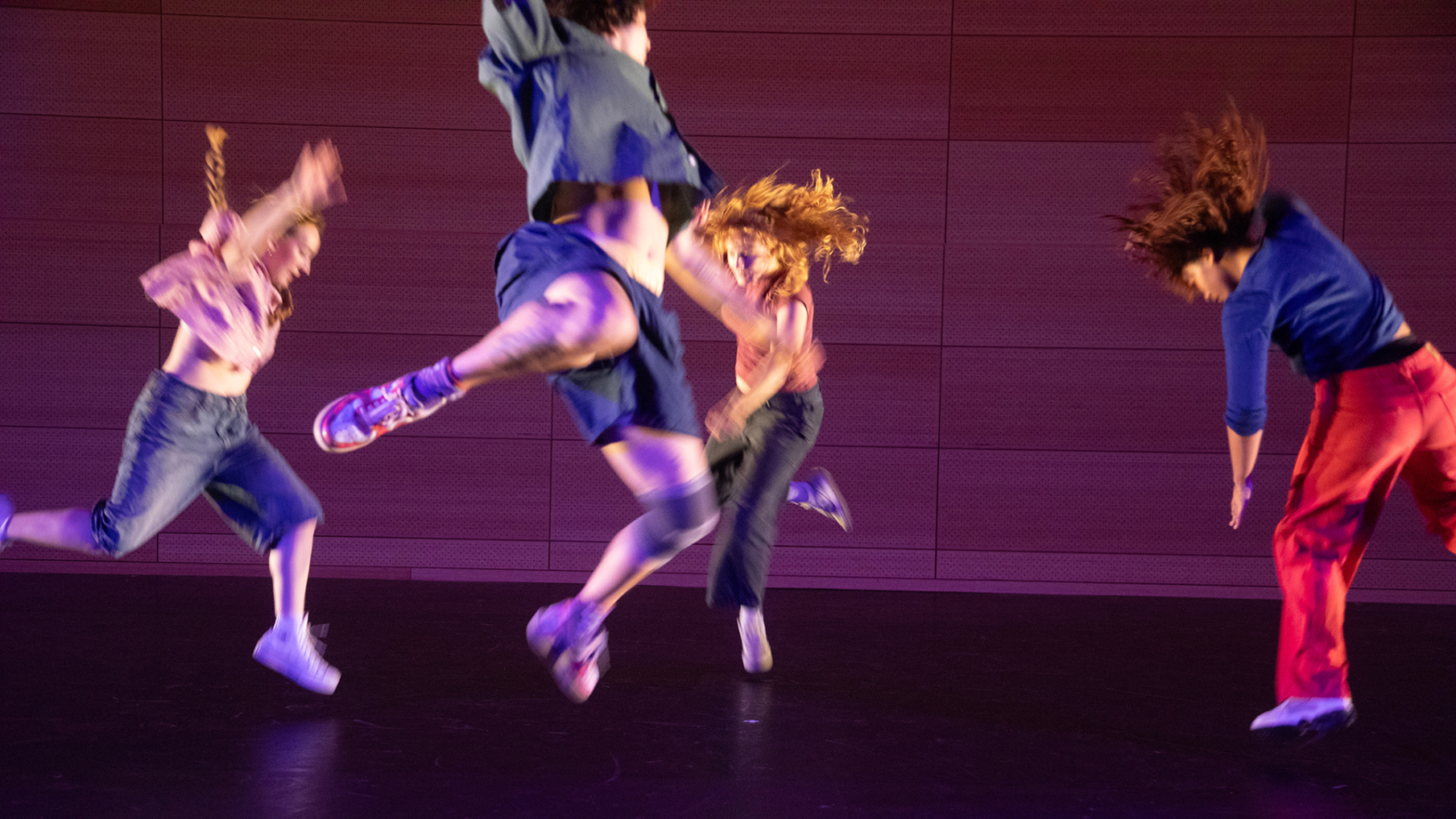At the John L. Tishman Auditorium, experimentation and collaboration took center stage. Presented by the Contemporary Dance Program at Eugene Lang College of Liberal Arts, the Fall 2024 Lang Dance Production showcased works from guest choreographer Quilian “Cue” Arnold, Lang faculty member Rebecca Stenn, and a student-created performance.
Excitement rippled through the crowd on Friday, Nov. 22 at 8:00 p.m. as eager audience members, some clutching colorful flower bouquets, waited for the lights to dim. The auditorium was filled to the brim, and closed-off rows of seats quickly reopened to accommodate the overflow.
Contemporary Dance program director Neil Greenberg introduced the evening with an air of enthusiasm, expressing gratitude to the audience for choosing to join the dance department for a night of eclectic performances. “Together, all the works on the program demonstrate varied approaches to choreography and to performance, and different understandings of the body and virtuosity,” he said.
The program opened with Rebecca Stenn’s piece, Folk Dance. Inspired by the music itself, Stenn shared how she approached the choreography: “For this particular piece, I found this music that I loved, so I thought, why don’t I just think about this piece through a musical lens.”
Dressed in all-black outfits, dancers began moving in unison across the stage in linear and circular formations. Their steps and expressions created a hypnotic rhythm that drew the audience into a world exploring themes of both connection and individuality. Throughout the five-part piece, dancers mirrored each other’s movements and reached outward, giving the impression of seeking partnerships without physical touch. Stenn reflected on the significance of these formations, saying, “The idea of community coming together — sometimes in joy, sometimes in sorrow — but the idea of community being in these formations together, circles, lines, and moving together, it’s powerful.”
The second work of the night stemmed from Greenberg’s course, Performance Research: Queering Cunningham & Cage, which delves into the creative entanglements of choreographer Merce Cunningham and composer John Cage. Students in the course were encouraged to blend improvisation and composition, influenced by the duo’s revolutionary use of chance mechanisms in their work.
This piece, characterized by its fragmented and unpredictable choreography, offered a sense of controlled chaos which left the audience both intrigued and puzzled. The performance began in silence with one dancer handing out cryptic paper messages to the audience, with phrases like “Be boat” and “My circus, my monkeys.” Simultaneously, another dancer entered the stage and recited the line, “Love moved me, it makes me speak,” a phrase that seems to reference Dante’s Divine Comedy. In Dante’s work, this line reflects the poet’s idea of love as the ultimate motivator for human actions and expressions, including art and creativity. The mantra-like repetition of the phrase created a meditative rhythm among the performers. The juxtaposition of chaos and rhythm felt like the opening act of an experimental theater production — provocative and disorienting.
The finale, “Playground,” choreographed by Arnold, brought a major shift in tone, offering a lively, high-energy performance that stood in contrast to the reflective and experimental pieces that came before. The dancers emerged wearing casual streetwear in jewel-toned colors, each outfit reflecting individuality while contributing to an overall cohesive vibe that almost felt like the ‘80s. The choreography showcased intricate footwork, rapid sequences, and dynamic lifts that showcased the dancers’ precision and stamina. The music — “Crache La Douleur (feat. Tony Allen)” by Fanga — was an immediate attention magnet, and many audience members could be seen subtly head-bopping along, caught in the contagious rhythm.
As the dancers took their final bows to the familiar tune of ABBA’s “Dancing Queen,” the evening concluded on a note of celebration for the accumulation of a semester’s work. Together, the performances offered a glimpse into the varied approaches to choreography and performance within Lang’s contemporary dance program, leaving the audience to interpret their broader meanings.








Leave a Reply